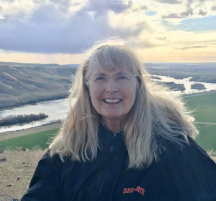No products in the cart.
The Water Pump

A Monument to Persistence
Story and Photos by Diana Hooley
On my hike this morning I took a different route to the Snake River Canyon. I walked through the dilapidated shed that houses the pumps that irrigate this end of the valley. By following this path I avoided the bull grazing in the pasture and the electric fence surrounding him.
When I climbed over a big pipe in the pump shed, I glanced at the old cast-iron Pomona pump. It sat braced on a patchwork of planks and rattled ominously, as if it might fly apart anytime—which wouldn’t surprise me. This pump has been continuously running for eighty-two years.
Leaving the pump house behind and striding on into the canyon, I thought about the Pomona pump, and the plans underway to finally retire it. The irrigation company that serves us in Indian Cove is currently in the process of modernizing its antiquated system.
Water districts across our state are doing likewise: the Marysville Project in eastern Idaho, the King Hill District in central Idaho, and in the southwest, Caldwell’s 269 Project. These districts are “ditching the ditch”—getting rid of open-air canals. They’re saving both money and energy by replacing the canals with underground, pressurized pipes to ferry irrigation water.
This content is available for purchase. Please select from available options.
Purchase Only
Purchase Only

